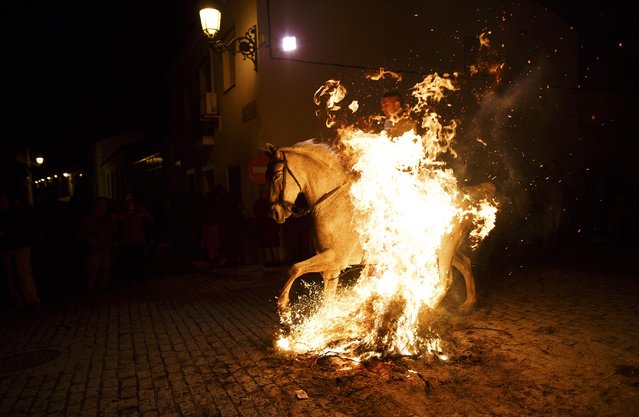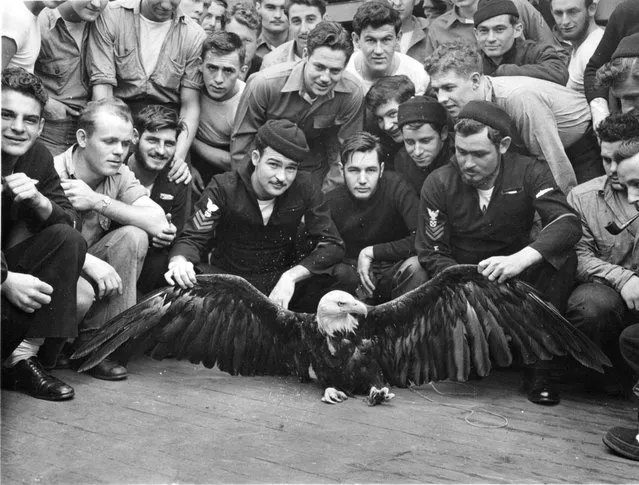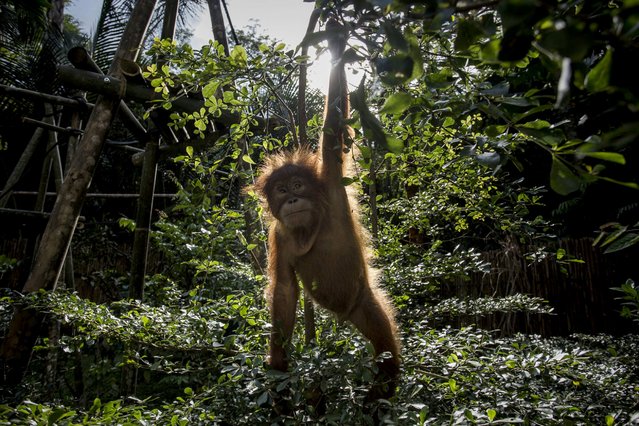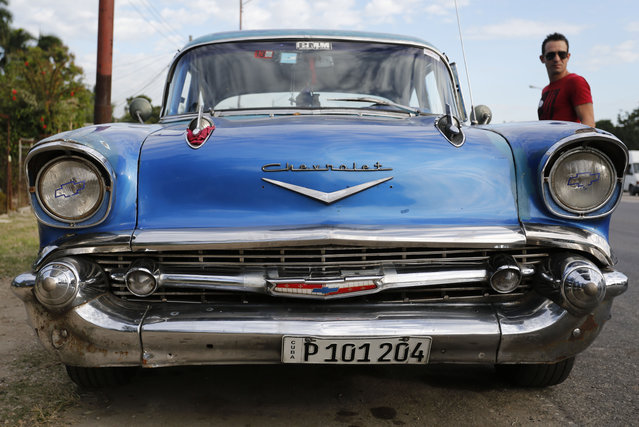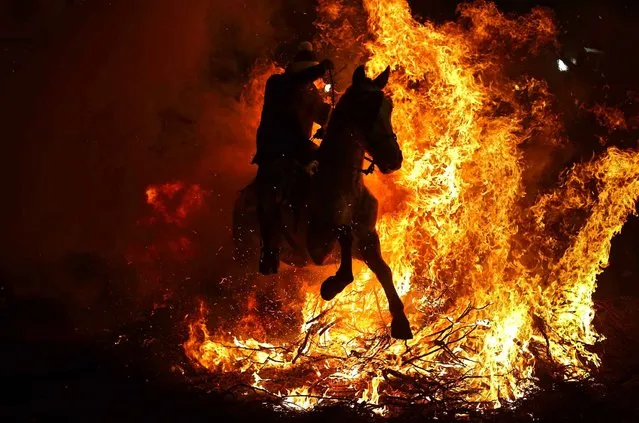
A man rides a horse through a bonfire as part of a ritual in honor of Saint Anthony the Abbot, the patron saint of domestic animals, in San Bartolome de Pinares, Spain, Saturday, January 16, 2016. On the eve of Saint Anthony's Day, dozens ride their horses through the narrow cobblestone streets of the small village of San Bartolome during the “Luminarias”, a tradition that dates back 500 years and is meant to purify the animals with the smoke of the bonfires and protect them for the year to come. (Photo by Francisco Seco/AP Photo)
19 Jan 2016 08:01:00,post received
0 comments


